AWS Cloud Practitioner CLF-C02
Billing and Pricing
Specific Billing Lambda
Welcome back, Cloud Practitioners. This is Michael Forrester. In this lesson, we’ll explore the key billing dimensions for AWS Lambda, focusing on how various configurations can impact overall costs. Rather than memorizing every detail, understanding the core cost drivers will help you make more cost-effective design decisions.
Overview of AWS Lambda Billing
Lambda is a serverless compute service that runs your code for up to 15 minutes per execution. Unlike other AWS services like RDS, which provide full underlying infrastructure control, Lambda abstracts away server management—you simply provide your code, and AWS handles the execution.
One of the primary billing dimensions is the configuration of memory allocation. With Lambda, increasing memory also ramps up compute power. Functions can be configured from as little as 128 MB to a maximum of 10 GB, and this memory allocation applies whether your function runs for 300 milliseconds or the full 15 minutes.
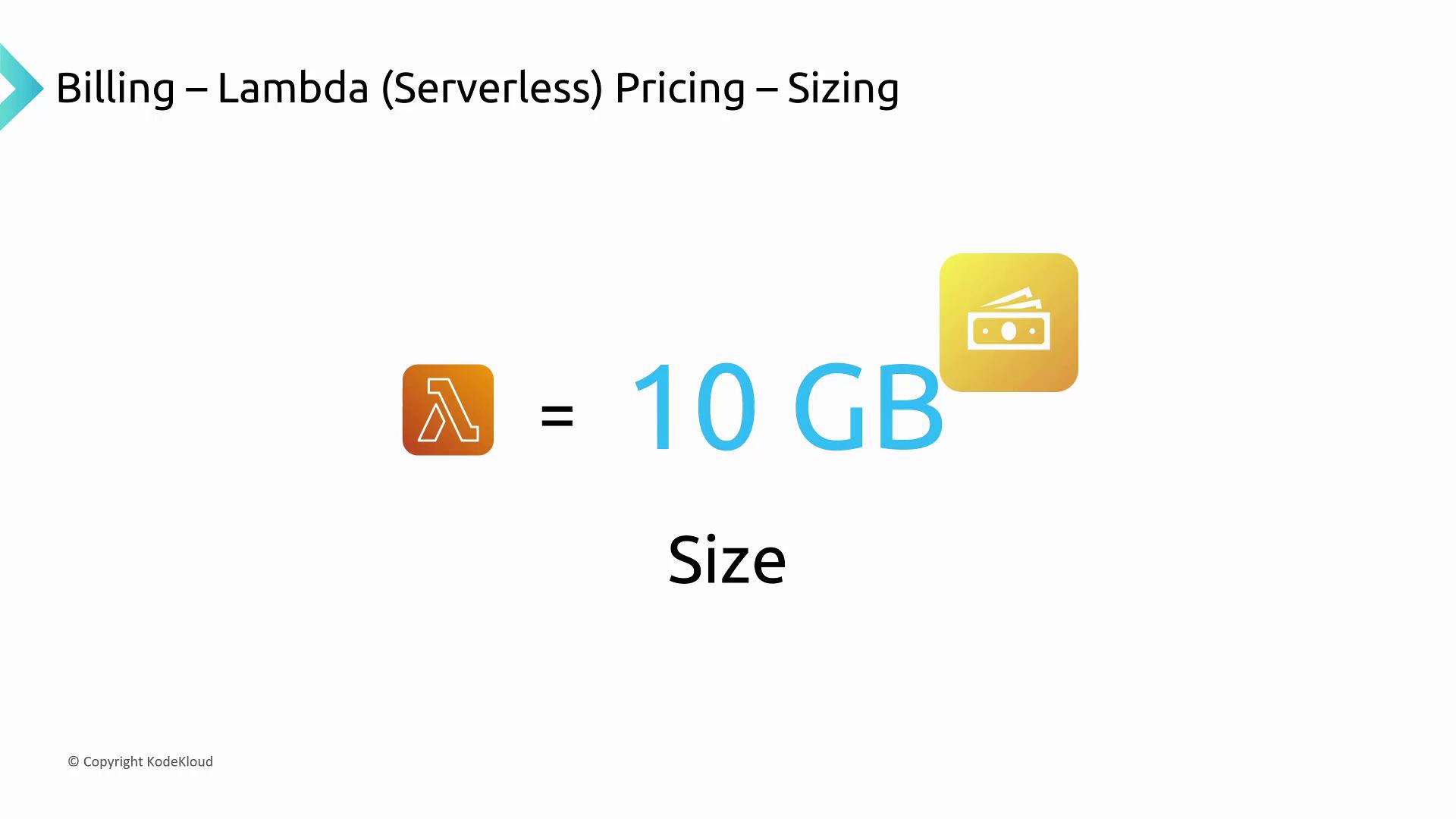
Billing Factors Explained
Memory and Compute Power
The amount of memory allocated to a function directly determines the computing power available. This means that as you assign more memory, your function gains access to increased CPU capabilities, which can have cost implications when running intensive tasks.
Execution Duration
Billing is determined by how long your function runs. For instance, if a function executes for one second and is invoked 1,000 times, you’re billed for 1,000 seconds of compute time. Each invocation significantly contributes to the overall billing.
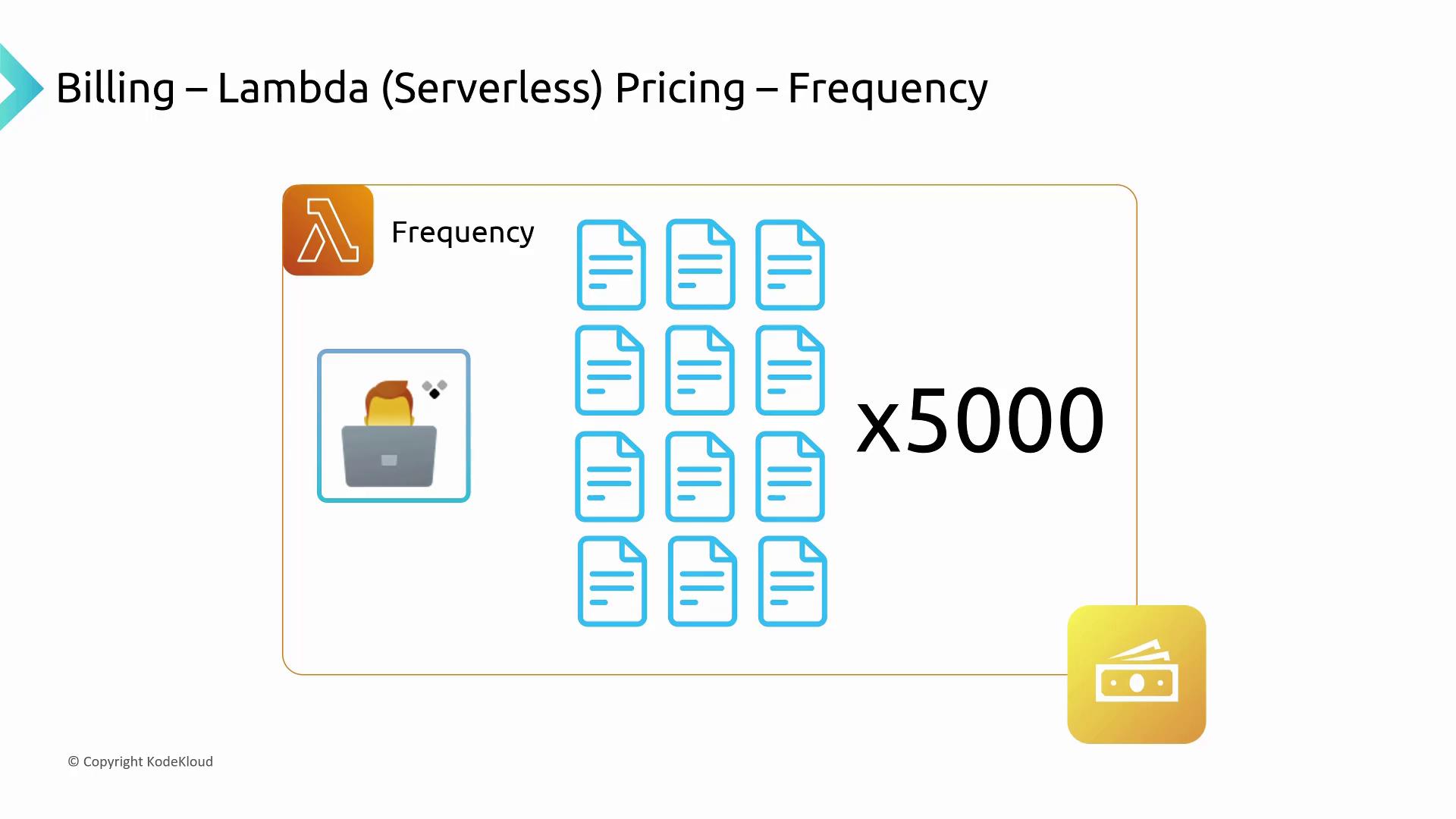
Invocation Frequency
Every time a function is triggered, it counts as a request. Combined with the execution duration and allocated memory, the frequency of these invocations shapes your billing model.
Pricing Essentials
Remember that the AWS Lambda free tier includes approximately 1 million free requests per month and about 400,000 GB-seconds of compute time (with some regions allowing up to 3.2 million seconds of compute time).
Detailed Pricing Example
Consider the following scenario as an illustration of Lambda billing:
- A function is configured with 10 GB of memory.
- Each invocation runs for 100 seconds.
- The function is invoked 1 million times in a month.
In the US East (Ohio) region, the cost for this configuration would approximately be $16,000. This cost is derived from multiplying the per-second rate by the allocated gigabytes and the total execution duration across all requests.
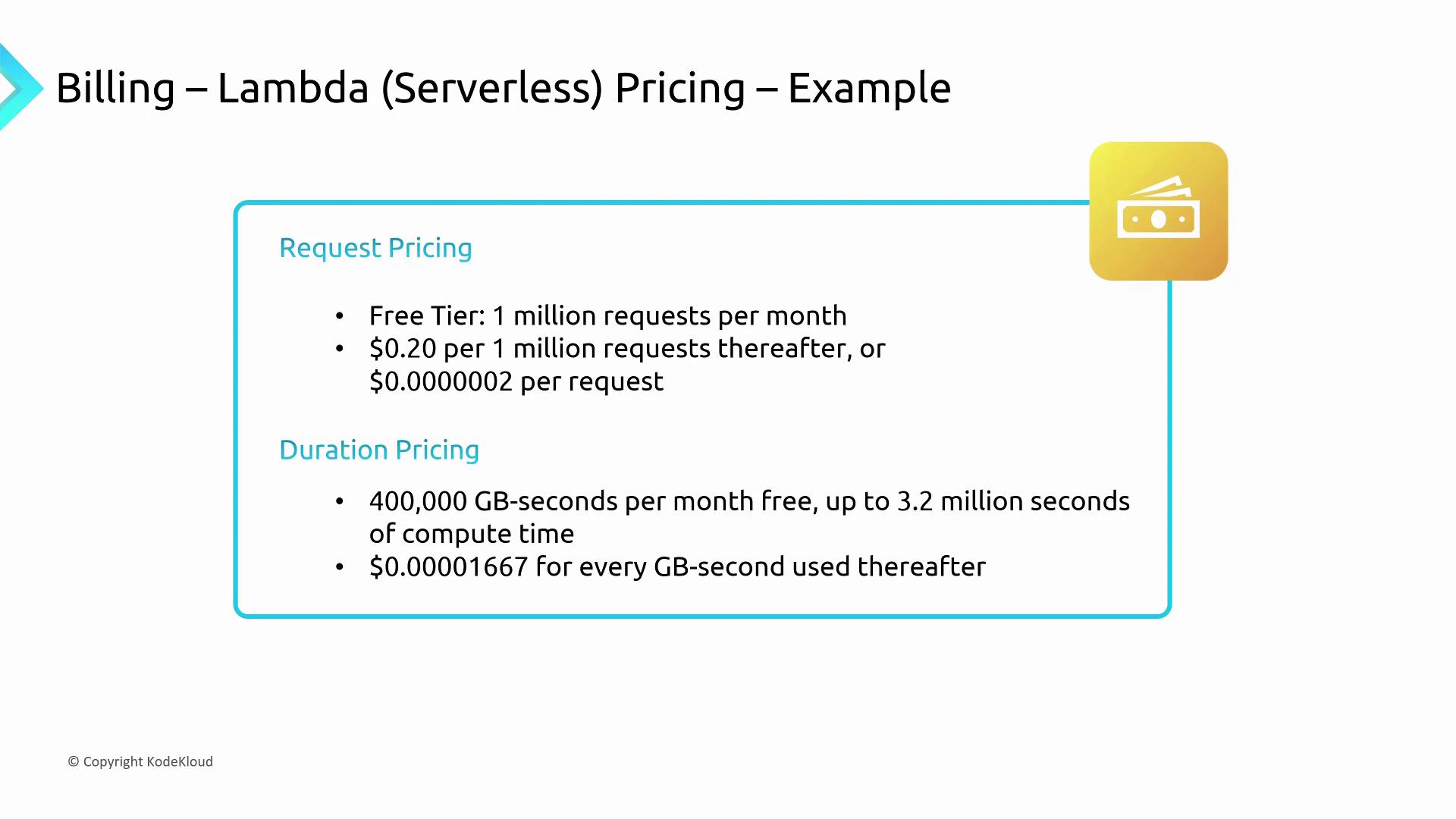
Summary of Billing Dimensions
AWS Lambda pricing is determined by three main factors:
| Billing Dimension | Description |
|---|---|
| Memory Size | Directly influences the compute power available |
| Execution Duration | Measured to the nearest hundredth of a millisecond |
| Invocation Frequency | Each function trigger counts as a separate billing request |
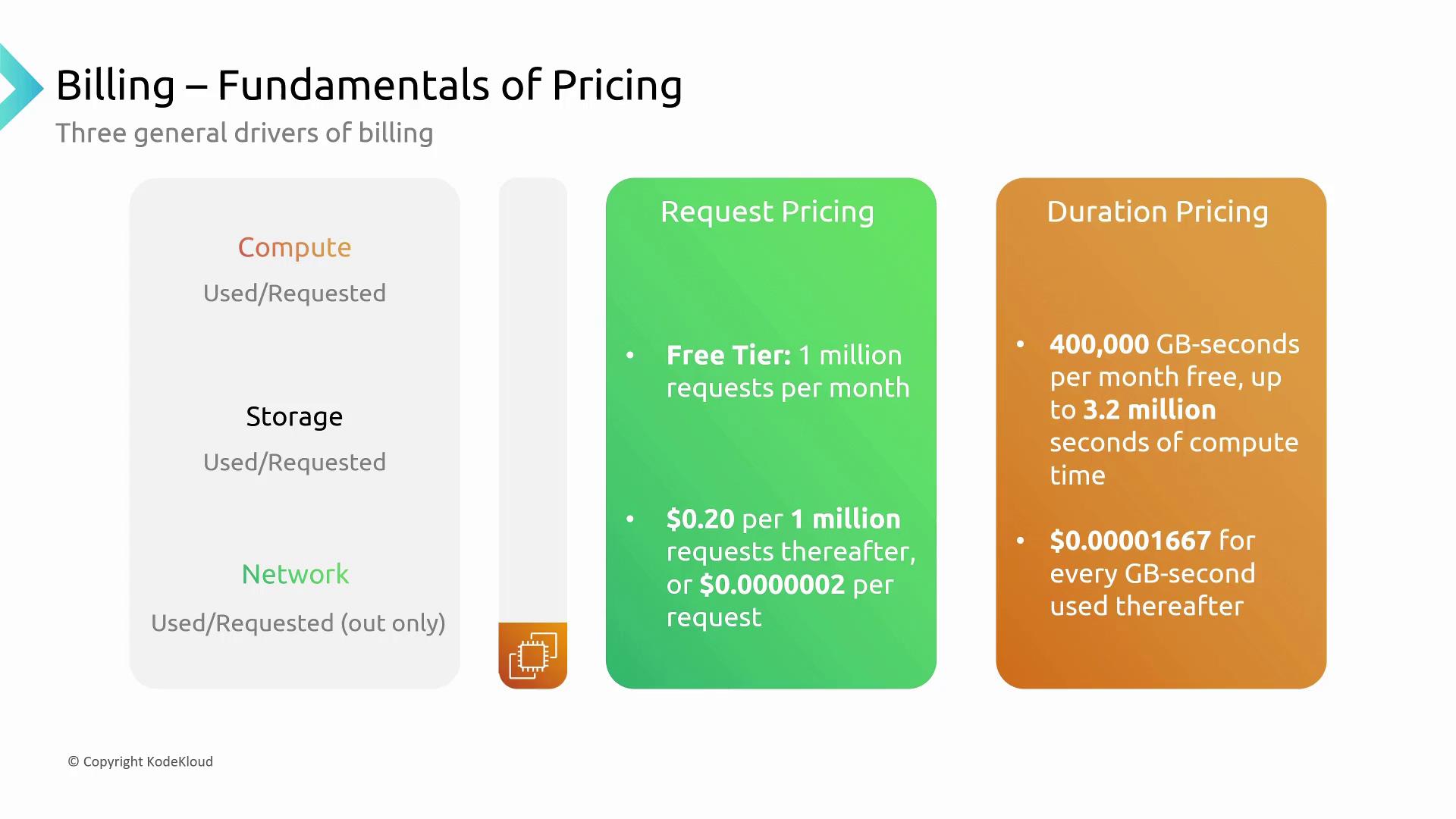
Example Recap
For a Lambda function executed 1,000,000 times in a month, with each instance configured for 10 GB of memory and running for 100 seconds, the approximate cost in US East (Ohio) is $16,000.
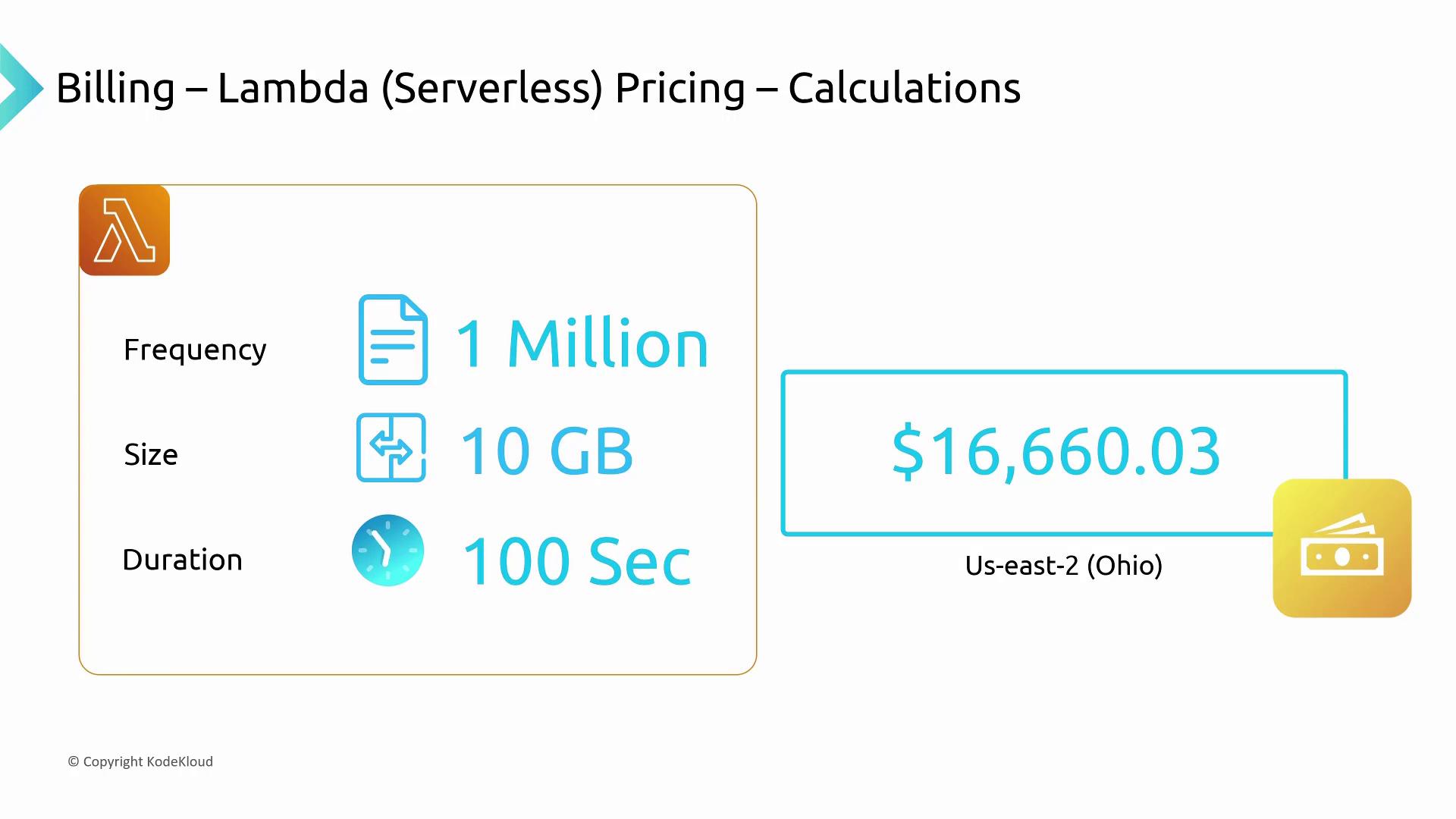
Additional Cost Factors
Keep in mind that additional Lambda features can further impact your cost:
- Increasing storage beyond the default 512 MB incurs extra charges.
- Enabling provisioned concurrency (also known as pre-warming) increases costs.
- Services such as Lambda@Edge or response streaming have their own pricing models.
Important
Even though these advanced features may not be covered at the Cloud Practitioner level, understanding their impact is crucial for accurate cost estimation.
Final Thoughts
In summary, AWS Lambda pricing is influenced by:
- Memory allocation (and its coupled compute power)
- Execution duration per function invocation
- Frequency of function invocations
Lambda functions are designed with a maximum memory limit of 10 GB and an execution time limit of 15 minutes, making them ideal for bursty, event-driven workloads rather than continuous 24/7 applications. Cloud Practitioners should focus on understanding these cost drivers rather than memorizing specific dollar amounts.
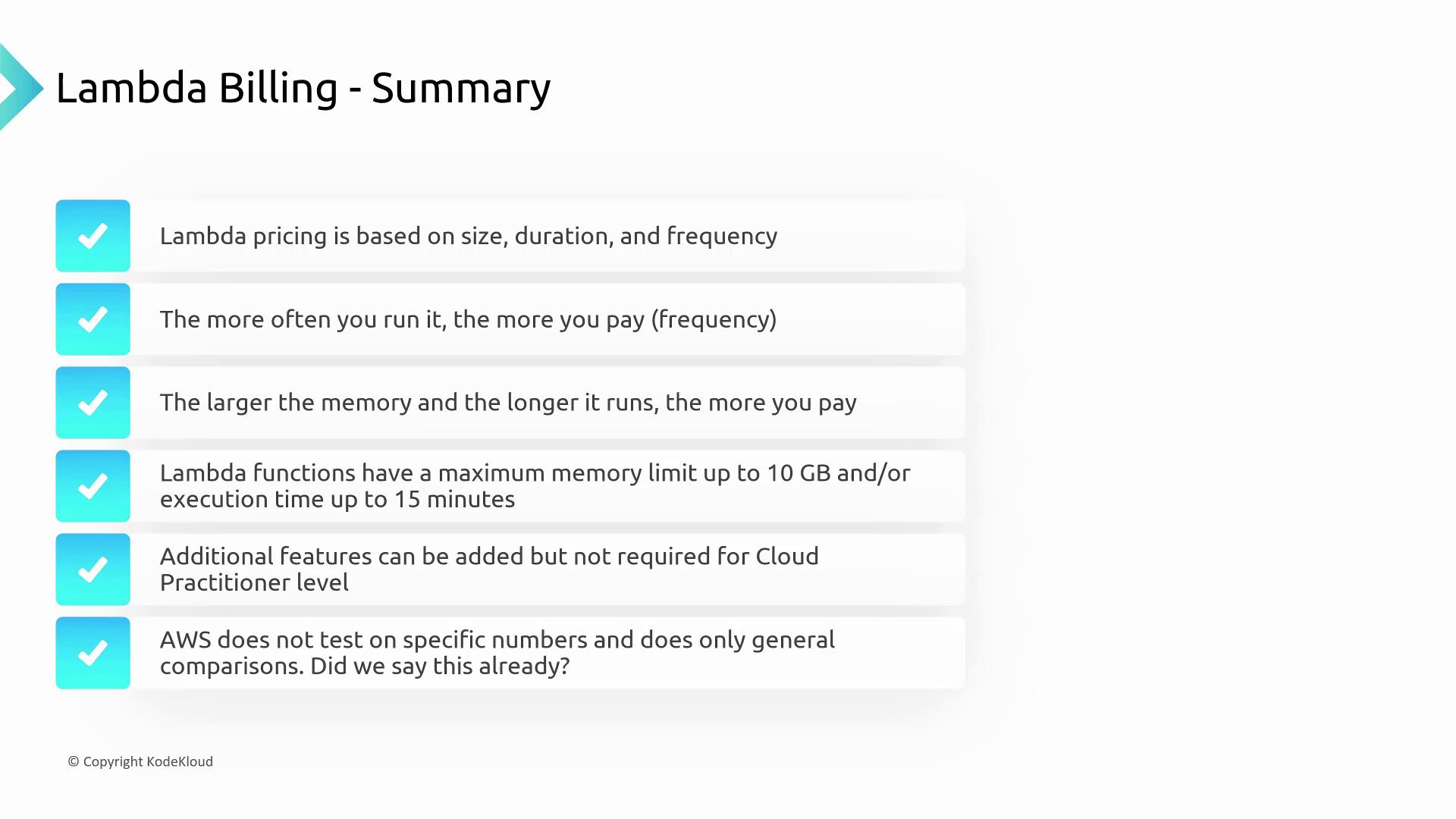
Thank you for following this lesson. Stay tuned for more insights in our upcoming sessions.
Watch Video
Watch video content